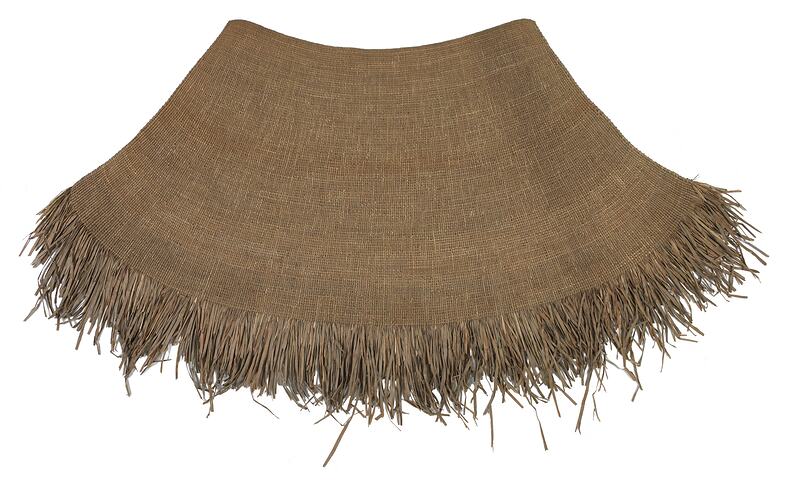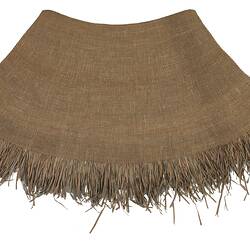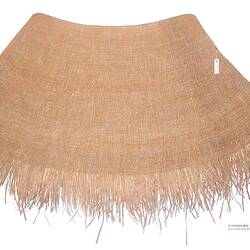Summary
Triangular garments were made across Arnhem Land, usually made with fibre made from the leaves of the pandanus tree. These distinctively shaped objects gave protection from the elements and provided a level of modesty for women, and were also put on the ground and used as mats as well as being used as a work surface.
Local Name
marrabadj
Physical Description
A skirt or mat made of grass fibres made using the twining technique. It is closely woven and has a fringe.
Significance
Jill Nganjmirra, a Kunwinjku woman and accomplished fibre artist, saw this mat and other mats collected by Paddy Cahill and sent to the then National Museum of Victoria in 1913. She immediatley recognised the fibre as being from a grass called modjeh that 'grows on the plain. This one they call marrabadj'. She noted that it 'wraps all the way around' and is worn by young and older women alike. As a fibre practitioner, Jill was able to distinguish this one from the others as having been made by a 'different hand' noting that 'one lady would make one of these, keep it for many years. Patch it when it has a hole.'
More Information
-
Object/Medium
Garment
-
Maker
-
Locality
East Alligator River, Western Arnhem Land, Northern Territory, Australia
-
Date Produced
-
Collector
-
Date Collected
-
Object Measurements
2055 mm (Length), 1445 mm (Width), 160 mm (Height)
-
Keywords
-
References
[Book] Hamby, Mary L. 2005. Twined together: Kunmadj Njalehnjaleken.
-
Collection Names
-
Type of item
-
Discipline
-
Category
-
Collecting Areas
Australian Indigenous - Northern Australia and Queensland and Torres Strait Islands


